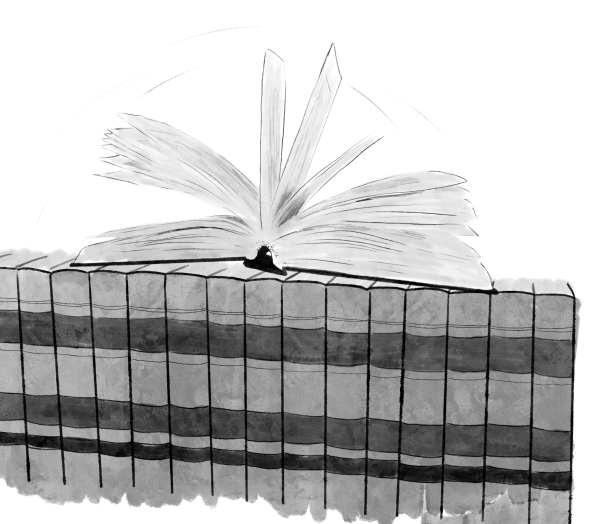Where are the statues of women?
Editor’s Note: Veronica Wernicke is a freshman at UNCW majoring in Communication Studies and is the Assistant Opinion Editor for The Seahawk. The opinions expressed in this article are solely those of the author. Veronica Wernicke may be found on Twitter @itsveronica98. All suggestions and inquiries may be sent via email to [email protected].
We often mark notable people or should I more accurately say notable men, throughout history with public statues.
In an article by the Smithsonian, they noted that of the roughly 5,193 public statues in the United States only 394 of them depict women. Meanwhile, outside of the United States, things are not much more in the favor of women. According to the Financial Times only 2.7% of statues in the United Kingdom are “historical, non-royal’ women.” In Denmark white men also make up most of the public statues according to a New York Times article.
Just trying to scrub up a rough number of statues in the world and then statues of women in the world was something I struggled to come up with — thanks for the help Internet. Either way, we all get that there are hundreds upon hundreds of statues around the world, and not nearly enough of them are of historical women. So, why aren’t there more statues representing women from our history?
It all falls back on the sexism of our world and the fact that until recently women were seen as second-class citizens in comparison to white males. Females of color were seen as even lower. Despite women’s obvious impact in our history, we looked to acknowledge powerful men instead. Even the few statues we do have of women are fictional characters or goddesses. Not impactful females like Eleanor Roosevelt or Harriet Tubman. Early on when statues went up all the time, sexism was even worse, but what is the excuse now?
Arguments for why these numbers are low include that statues are just not as popular as they used to be and today we do not see them going up at the same rates we previously saw. To this, I say “so what?” Just because putting up statues is not as popular does not mean we should just ignore the obvious sexism taking place. It is 2018 so let us honor these women and put up more statues of them already. Hell, we still put up statues of male sports stars, but we do not have more statues of women. I do not get it.
It is also important to note the debate surrounding statues within the past year; the debate over whether or not historical statues representing Confederate soldiers should be taken down or not. Since the debate started we have seen the removal of many of those statues for depicting the “wrong” side of history.
The conversation even hit Wilmington. Downtown Wilmington features two confederate statues one of George Davis on Market Street and a memorial at Third and Dock Street. Both of which have seen acts of vandalism since the conversation heated up according to the StarNews.
While I am not particularly concerned with this other argument as the women one I do find it ironic. We are willing to have more conversations about “un-statuing” people, but we have failed in discussing people – women – who have been left out. If we are having these debates concerning the removal of statues we must have equal conversations about adding more representation for historical women.
Due to these lacking numbers, U.S. groups like Where Are the Women are looking to change this by advocating for more statues of women to be placed in cities like New York. Revolutionary women like Elizabeth Cady Stanton and Susan B. Anthony. They want the U.S. to catch up with places like Germany and Paris who have new streets and tramways named after important women in history. While they are not statues, it is a great way to publicly recognize amazing women throughout our history.
Denmark recently took a huge step in the right direction. They released a 23-foot-tall statue of anti-colonial rebel leader Mary Thomas. “I Am Queen Mary” is the country’s first public statue depicting a black woman. Not only is Denmark stepping up the game in the female department, but the race department as well; five golden stars for you, Denmark.
To make this news even more awesome it was actually two black women — Jeannette Ehlers and La Vaughn Belle — inspired by Thomas who designed the statue of her.
For those unfamiliar, Thomas was one of the three rebel leaders during the 1878 “Fireburn” uprising. During the largest Danish labor revolt over 50 plantations in Frederiksted in St. Croix were burned. In a statement on Belle’s website, Ehlers and Belle said they created the statue to challenge and change the what people of Denmark remember about Denmark’s role in slavery. To add to the statue’s powerful message, it also sits only a mile from where Thomas was jailed in Denmark, according to the New York Times.
Now, this statue of Thomas is a great example of a strong and important woman from our world’s history. Did you read that correctly rest of the world?
I only hope that other countries follow in Denmark’s steps. I hope that in the near future we began to honor our world’s history of great women by seeing more public statues. Not only of white women, but also women of all colors.








meatlessmakeovers • Apr 16, 2018 at 6:14 pm
Why they take everytime the brasilian jesus statue?!the polish jesus statue is 9m bigger than the statue in brasil